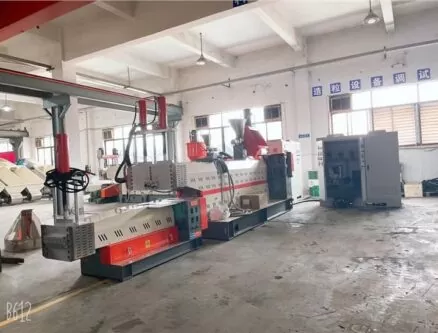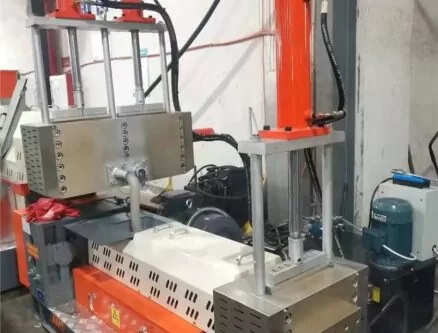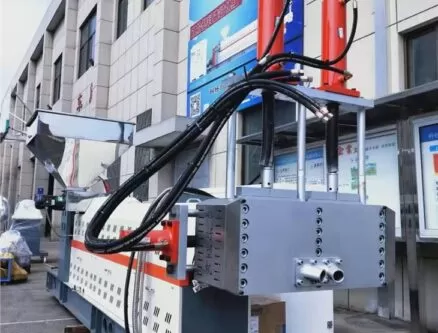Plastic waste is piling up like dirty laundry in a teenager’s room—overflowing, smelly, and ignored. But for us in the plastics industry, that “waste” is gold in disguise. The question is: how do you turn heaps of post-consumer plastic into shiny, sellable pellets like a true industrialist? Easy to ask. Not so easy to answer—unless you’ve been living and breathing it, like I have.
To make plastic pellets industrially, you need a streamlined setup: start with plastic shredding, move on to washing and drying, then feed the flakes into a pelletizing line. The secret sauce? Precision, consistent temperature control, and the right screw configuration. Without that, you’re just melting plastic soup.
Let’s cut through the fluff and dive into how we, at Amige, do this like pros (and how you can too).

What is Plastic Pelletizing and Why Does It Matter?
Pelletizing is the process of converting plastic scraps into uniform, manageable pellets. These little beads are the lifeblood of plastic manufacturing.
It all starts with collection and sorting. We gather plastics from post-consumer waste, industrial scrap, or production leftovers. It’s not just trash—it’s potential.
Once sorted by resin type—HDPE, LDPE, PP, PET—we’re ready to shred.
What’s the Role of Shredding and Crushing?
Here’s where we shine.
Shredding and crushing break plastics down into smaller flakes. At Amige, we design industrial shredders that chew through thick plastic like a hot knife through butter. And I don’t mean that lightly—we’re talking about robust steel blades, precision-built rotors, and smart overload protection.
Want efficiency? You need uniform size reduction. This reduces energy consumption downstream in pelletizing and increases output. We did a test last year—optimized shredding increased pellet output by 23% across three production lines.
How Does Washing and Drying Work?
Imagine sending muddy potatoes to a French restaurant—they won’t make it to the plate. Same with plastic.
After shredding, the flakes are often dirty. We run them through our friction washers, float tanks, and spin dryers. The goal? Remove labels, glue, oil, and that mysterious gunk you’d rather not touch.
Our latest friction washer uses 15% less water and gets better results. Dry flakes mean less moisture in pellets, which improves their quality and color.

What Machines Are Needed to Make Plastic Pellets?
This is the million-dollar setup:
- Crusher or Shredder – to size down.
- Washer/Dryer System – to clean it up.
- Feeding System – for consistent input into the extruder.
- Extruder (single or twin-screw) – melts and mixes the plastic.
- Water ring or strand pelletizer – chops it into neat pellets.
- Vibration sieve and silo – for final sorting and storage.
Simple? Not quite. Each machine has to talk to the next one like an orchestra. One off note and you get blobs instead of pellets.
What’s the Difference Between Water Ring and Strand Pelletizing?
Strand pelletizing pulls out spaghetti-like strands from the extruder and chops them after cooling. Great for rigid plastics.
Water ring pelletizing? That’s our jam for soft plastics. The molten plastic hits a spinning knife under water, instantly cooling and shaping the pellets.
Want tight tolerance and beautiful granules? Choose your pelletizing method wisely.
What Are the Key Variables to Control?
Let me tell you what separates rookies from seasoned industrialists:
- Temperature: Too hot and you degrade the polymer. Too cold and it clogs the die.
- Screw speed and L/D ratio: This affects mixing, pressure, and melting uniformity.
- Moisture: Should be below 0.5% to avoid bubbles and defects.
- Die-hole size: Controls pellet diameter—most go for 3mm.
We run daily calibrations. Because sloppy control = rejected batches = unhappy customers = CEO headaches (me).
Can I Make Pellets from Any Type of Plastic?
Short answer: no.
Long answer: some plastics, like PVC, are tricky due to chlorine content and require corrosion-resistant barrels and screws. Others, like PS and ABS, need vacuum venting to remove volatile gases. And multilayer films? Oh boy, good luck.
We typically process:
- LDPE (e.g., film wrap)
- HDPE (e.g., detergent bottles)
- PP (e.g., yogurt cups)
- PET (e.g., water bottles)
Each type has its own melting point, viscosity, and flow characteristics.

How Do I Ensure Consistent Pellet Quality?
Quality control is everything.
We test melt flow index (MFI), pellet size distribution, density, and color. MFI gives us insight into the polymer’s processing behavior—essential for clients.
At Amige, we use inline sensors and lab testing. Plus, our operators are trained hawks. They spot defects faster than AI. (Sorry, ChatGPT.)
What’s the ROI of a Pelletizing Plant?
This part makes investors sit up.
Let’s say your line processes 1,000 kg/hour of LDPE film scrap. That gives around 850 kg/hour of pellets. Sell them at $0.75/kg, and you’re pulling in $637/hour. Run that for 20 hours/day and you’re looking at over $12,000 daily revenue.
Now subtract electricity, labor, and maintenance. Still profitable? You bet. It shows most clients recover their investment within 11–14 months.
What Mistakes Should I Avoid?
Oh, I’ve seen them all:
- Buying machines without knowing the input plastic type.
- Skipping the washing process to “save cost”—ends up costing more.
- Underestimating the importance of trained staff.
- Using old extruders from 1998—please don’t.
Avoid these, and you’re already halfway to becoming an industrialist.

What Trends Should I Watch?
This industry is evolving fast.
- AI-based monitoring: Real-time pellet quality checks.
- Decentralized mini pelletizers: For smaller factories.
- Green pellets: From bio-based plastics or zero-carbon processes.
- Europe’s recycling regulation tightening by the day. If you’re exporting, keep up.
At Amige, we’re working on integrating smart monitoring systems in our machines. Because if you don’t innovate, you evaporate.
Conclusion
Becoming a plastic pellets industrialist is about process mastery, not just machinery. Get the basics right—shredding, washing, pelletizing—and add consistency and control. Trust me, the pellets (and profits) will follow.
